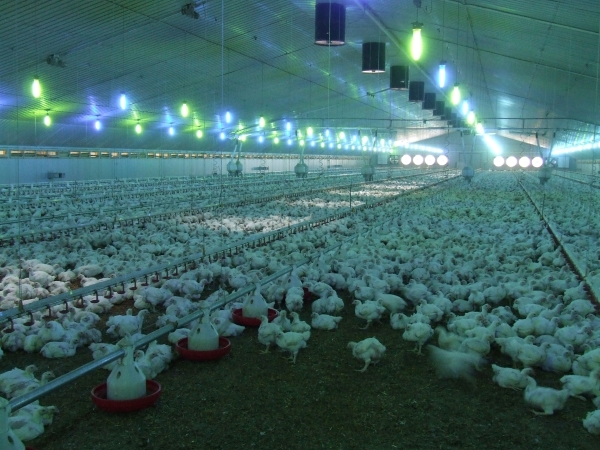
Breeding for better broiler welfare: balancing sustainability, economic and consumer preferences
We aim to provide a comprehensive analysis of the impacts of, opportunities for and barriers to shifting UK chicken meat production towards slower-growing, better welfare broiler breeds.

Challenge
Selection for fast growth has greatly increased the efficiency of broiler chicken production, resulting in the most widely-consumed affordable protein, globally (FAO). However, multiple breed comparison studies have shown that slower growing broilers have better welfare outcomes, in terms of both health and natural behaviour, than traditional fast growing breeds. Despite campaigns for producers to shift towards slower-growing “Better (welfare) Breeds” (Better Chicken Commitment statement UK), the vast majority of UK production (95%) still relies on fast-growing breeds. Only a few global broiler breeder companies can undertake breeding for better welfare, but to achieve real world effect this must be driven by industry demand. A major barrier to switching to production using slower growing breeds is the lack of clear information on the holistic implications for UK Sustainable Agriculture, in which animal welfare plays only one important part. This includes poor understanding of the collective environmental, economic and consumer responses to slower-growing broiler breeds. Analysis commissioned by industry bodies suggests substantial economic and environmental costs associated, due to longer rearing periods, higher feed conversion and lower yields, all requiring increased land usage. However the potential offset with improved welfare has been examined with only limited welfare outcomes. Critically, how consumers prioritise environmental and animal welfare attributes of broiler products remains unknown, making adoption of Better Breeds high risk for many producers without further information. Research is sorely needed to define optimal solutions enabling veterinary advice to producers and policy makers on how best to balance broiler welfare, performance and sustainability.
Solution
We aim to draw together and expand upon the relatively disparate and patchy information that is available to date on the UK context. We will analyse the drivers of the adoption of the “Better Chicken Commitment” and analyse different stakeholder perspectives on the implementation of slower-growing chicken from different stakeholder perspectives. We will explore consumer attitudes towards consumption of slower growth chicken, focussing on views on potential trade-offs between environmental impacts, animal welfare and cost. We will refine and extend previous economic analysis of a UK switch towards slower growing breeds using our existing welfare, antibiotic-use and production data for the main UK conventional [Ross 308] and slow-growing [Hubbard JA lines] breeds, and incorporating greater assessment of externalities, such as CO2, biodiversity, and consumer impacts. Using these data, we will produce an integrated assessment model, incorporating stakeholder input, to obtain preliminary estimates for key scenarios and impacts relevant to producers and society. Together this information will help us to provide a clearer picture of impact of adopting slower-growing breeds in the UK context, and to propose a range of indicators for systematic assessment of future standards and breeds.
Impact
Only 4-5% of UK broiler production currently utilises “Better Welfare” slower-growing breeds. An additional 5% transition of conventional producers to these breeds would translate to replacement of ~50 million conventional birds by higher welfare birds in the UK per annum. However the veterinary profession has incomplete evidence to advise producers and policy makers on balancing broiler welfare, health, performance and profitability. Our findings will inform advice to producers on the adoption of higher-welfare breeds with consumer-acceptable credentials that have the least detrimental environmental footprint and impact on performance. Information provided by this project may increase farmers’ confidence in breed selection and house investment. Further, given that the association between welfare outcomes and growth rate is not absolute, our findings will support dialogue with Global breeding companies on opportunities for selecting for both high welfare AND reasonable growth to produce more widely accepted breeds.
Partners
RVC staff roles: Siobhan Abeyesinghe (Project Lead, Poultry Welfare Scientist), Jackie Cardwell (Veterinary Epidemiologist and qualitative researcher), Christine Nicol (Poultry Welfare Scientist), Imogen Stanley (Research Associate in Social Science & Modelling), Mehroosh Tak (Applied Economist focussed on agricultural policies and food systems). The project is undertaken in association with our collaborators Dr Sol Cuevas Garcia-Dorado at London School of Hygiene and Tropical Medicine and Charles Daniel Parker BA, VetMB, CertPMP, DipECPVS, FRCVS, Director Emeritus Metheringham of Slate Hall Veterinary Practice and the British Poultry Council.
We are incredibly grateful to our funders the Animal Welfare Foundation and the British Poultry Council for supporting this work.
